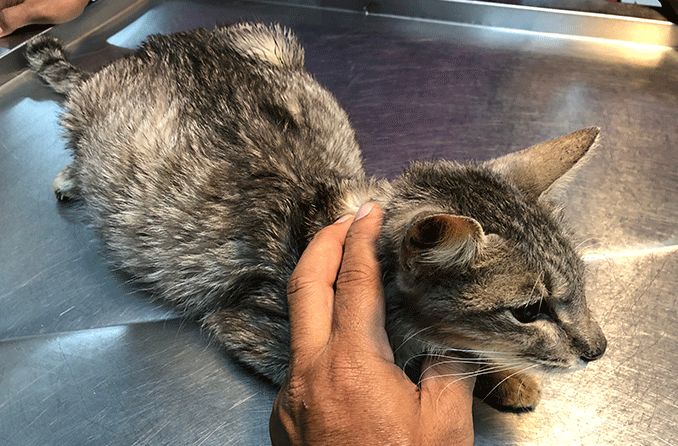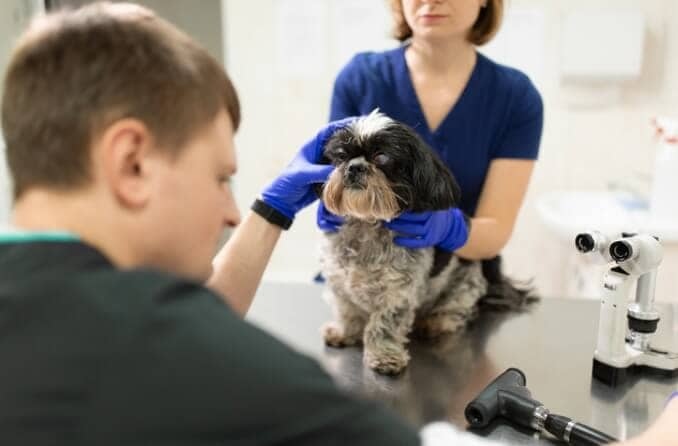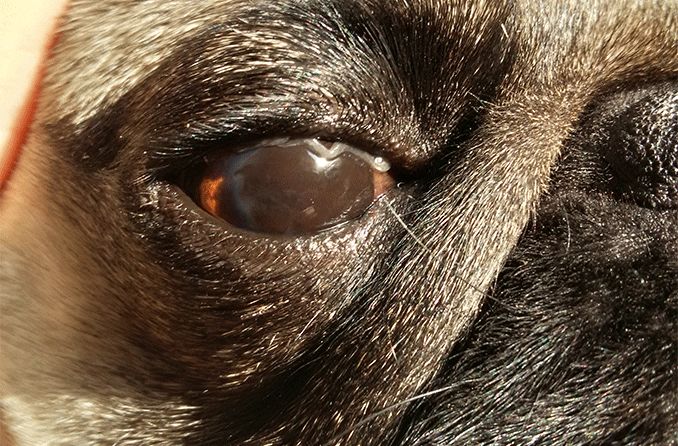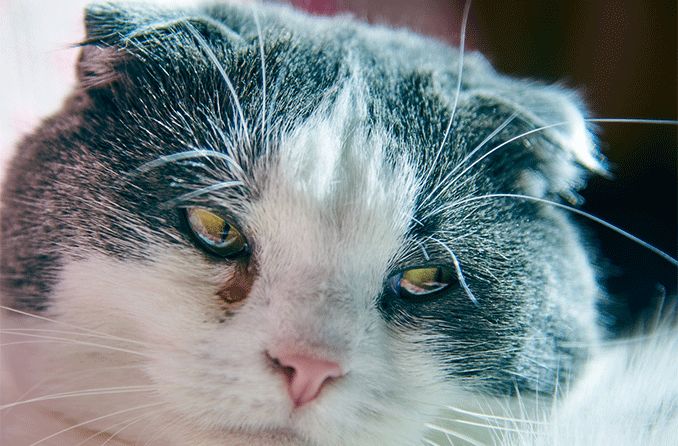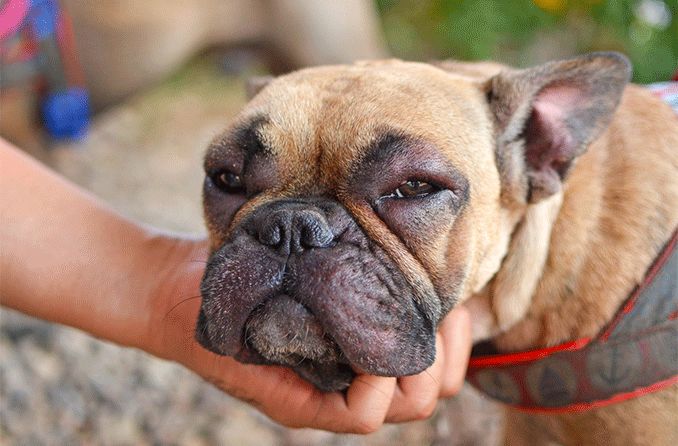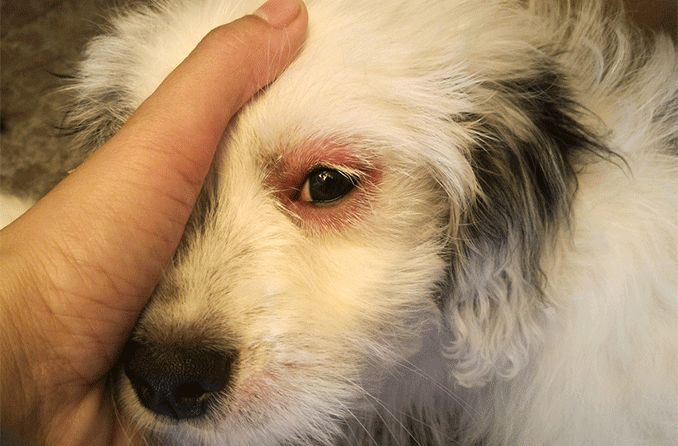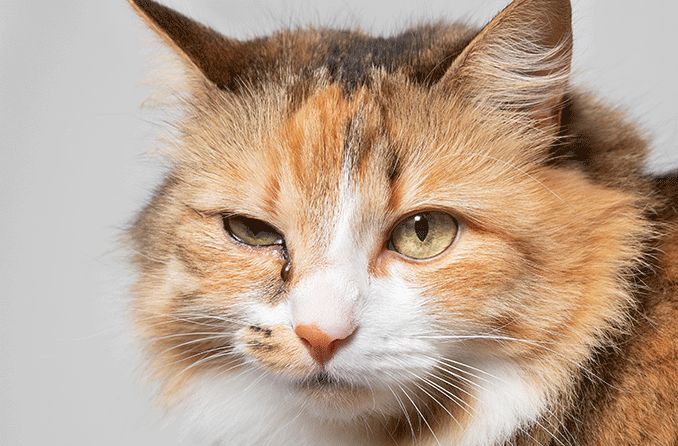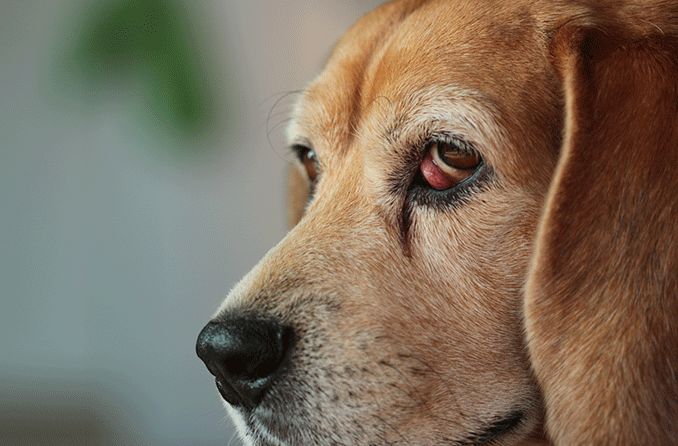What is feline infectious peritonitis (FIP)?
Feline infectious peritonitis (FIP) is a disease caused by a feline coronavirus. Only a small percentage of cats who get infected with the virus develop FIP. FIP can cause general symptoms such as weight loss and fever. It can also lead to many other issues, including eye problems.
Cause of FIP in Cats
Feline infectious peritonitis is caused by the feline enteric coronavirus (FeCV). Many cats get infected with this coronavirus as kittens or young adults. In most cats, the virus never causes any lasting problems.
A cat may develop mild symptoms shortly after getting the virus. These may include diarrhea, respiratory issues, watery eyes and eye discharge. These symptoms usually clear up quickly.
In about one in 10 cats, the virus changes in ways that allow it to infect macrophages, which are specialized immune system cells. Most cats fight off this infection, and fewer than 2% develop FIP.
In these cats, the virus can travel through the blood to affect different parts of the body, including the eyes. Most cats that get diagnosed with FIP are under three years old.
You should know that FeCV is a feline coronavirus. It's not the same as the coronavirus that causes COVID-19 in humans. FeCV is more similar to some of the coronaviruses that cause common colds in humans. But this coronavirus is specific to cats.
FIP risk factors
There are several risk factors for FIP in cats. These include age, sex and breed. Young, male and unaltered cats are more likely to get FIP than their feline counterparts.
Some breeds of purebred cats are also at significantly higher risk for FIP than mixed breed cats. These breeds include:
- Abyssinian
- Bengal
- Birman
- Himalayan
- Ragdoll
- Rex (including Cornish and Devon)
Some breeds of cats do not have a significantly higher risk for FIP than mixed breed cats. These breeds include: Burmese, Exotic Shorthair, Manx, Persian, Russian Blue and Siamese cats.
Forms of FIP in cats
There are two main forms of feline infectious peritonitis: wet FIP and dry FIP. About half of cats diagnosed with the disease have wet FIP and the other half have dry FIP. In some cases, dry FIP can turn into wet FIP, and the reverse can also happen.
The two forms of FIP tend to have different symptoms and present differently. Wet FIP involves fluid buildup in the body, most often in the abdominal cavity. And wet FIP tends to develop very quickly.
It is also easier to diagnose based on the signs and symptoms and the ability to take a sample of fluid from the abdomen. This fluid is typically thick and yellow, which helps the veterinarian to make a diagnosis.
Dry FIP involves lesions in different parts of the body. It tends to develop more slowly and is more likely to cause eye issues. In fact, dry FIP can be difficult to diagnose if the cat does not have distinctive changes in the retina or other parts of the eye (ocular lesions). In many of those cases, dry FIP is diagnosed only after death through a necropsy.
Symptoms of FIP in cats
FIP in cats can cause a variety of symptoms. Most veterinarians rely on signs and symptoms to diagnose feline infectious peritonitis.
Both wet and dry FIP may start with general symptoms such as depression, fever and weight loss. A cat with FIP may also eat less or stop eating. Beyond these general FIP symptoms, a cat may develop specific symptoms based on the form of feline infectious peritonitis.
Symptoms of wet FIP may include a buildup of fluid in the abdomen and chest that can make the belly swell noticeably. A cat with wet FIP may also develop breathing issues due to fluid pressing on the lungs.
Symptoms of dry FIP may include neurological symptoms such as ataxia, which may show up as difficulty with walking or balance, and seizures.
Eye symptoms are often among the first and most common signs of dry FIP, though they can sometimes occur with wet FIP. About one in three cats with dry FIP have eye lesions. Eye problems caused by feline FIP can include:
- Anterior uveitis – inflammation of the iris and ciliary body in the eye
- Glaucoma – a condition in which fluid buildup puts pressure on the optic nerve
- Retina problems – retinal detachment and/or retinal hemorrhage
Veterinarians are trained to check their patients’vision and can recognize common eye problems in cats, including feline cataracts. Your veterinarian also can see various changes in the eyes related to feline FIP eye problems. This can help them make an FIP diagnosis.
FIP treatment
Most treatment for FIP centers around treating symptoms, reducing inflammation and keeping the cat comfortable during the remaining days, weeks or months of life. FIP treatment may include:
- Corticosteroids such as prednisolone
- Immune suppressing drugs such as cyclophosphamide
In addition to the currently available treatments, some antiviral drugs are offering hope for the future of feline FIP treatment. But more research is needed, and these treatments are not yet commercially available through veterinarians.
Experimental oral and injectable antiviral drugs also show promise as a treatment for cats with ocular FIP — FIP eye issues. Cats with ocular FIP may experience improvement of symptoms and vision within as little as two weeks of treatment. However, these drugs are also not yet available to the public.
Because this antiviral treatment is not yet available in the United States, some people with cats have turned to ordering drugs on the black market for at-home treatment. There are major risks involved in going this route, and it is best to talk to your veterinarian about treatment.
But, be aware that it is considered unethical by state regulatory boards for veterinarians to assist in this type of treatment.
Prognosis
The prognosis for FIP is poor. Unfortunately, FIP in cats is usually fatal. A cat with symptoms may be able to live for weeks or, rarely, months with treatment. But because FIP has such a poor prognosis, a veterinarian may recommend euthanasia as the kindest option to minimize suffering for a cat with FIP symptoms.
It is important to take your cat to the veterinarian right away if you suspect feline infectious peritonitis. Your veterinarian will be able to determine whether your cat has FIP or another issue that is causing the symptoms.
If your cat does have FIP, your veterinarian can tell you whether they may be a good candidate for any available treatments. If your cat has a poor prognosis or is in the final stages of FIP, your veterinarian can help you make end-of-life decisions if you decide together that is what is best for your pet.
